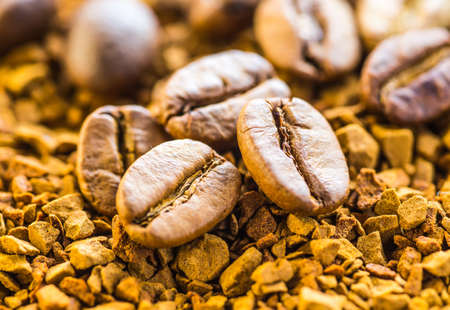1. The Growing Demand for Sustainability in Coffee Culture
Across the United States, coffee isnt just about a morning pick-me-up anymore—its becoming a symbol of lifestyle and values. More than ever, consumers are choosing where they get their daily brew based on how eco-friendly a café is. From compostable cups to zero-waste initiatives, coffee lovers want to know that their favorite cafés care about the planet just as much as they do.
Eco-Conscious Customers Are Changing the Game
Todays customers are informed and intentional. They check labels, ask questions, and support businesses that align with their values. This shift is especially strong among Millennials and Gen Z, who make up a large portion of the specialty coffee market. Theyre not just looking for great taste—they’re looking for sustainability too.
What Does Sustainability Mean in Coffee Shops?
Sustainability in cafés goes beyond using recyclable cups. It includes:
- Reducing single-use plastics
- Using locally sourced or organic ingredients
- Composting food and coffee waste
- Offering plant-based milk options
- Partnering with environmentally responsible suppliers
Why Cafés Are Embracing Composting
One major area getting attention is composting. Coffee grounds, filters, and even leftover pastries can be turned into nutrient-rich compost instead of ending up in landfills. Not only does this reduce waste, but it also helps local farms and gardens thrive.
Common Café Waste Items and Their Compost Potential
| Café Waste Item | Can It Be Composted? |
|---|---|
| Coffee Grounds | Yes – high in nitrogen, great for compost |
| Used Paper Filters | Yes – if unbleached and chemical-free |
| Dairy Milk Leftovers | No – attracts pests, avoid composting |
| Baked Goods (non-dairy) | Yes – in small amounts |
| Plastic Cups/Lids | No – unless certified compostable |
This growing awareness is pushing cafés across the country to innovate and adopt green practices that meet customer expectations while benefiting the environment.
2. From Brew to Biomass: Coffee Grounds as a Composting Powerhouse
Every day, cafés across America brew millions of cups of coffee—leaving behind piles of used coffee grounds. Instead of tossing them in the trash, more and more sustainable cafés are turning this so-called waste into something truly valuable: compost gold.
Why Coffee Grounds Are Great for Compost
Used coffee grounds are rich in nitrogen, a key ingredient in successful composting. When combined with carbon-rich materials like dried leaves or cardboard, they help create the perfect environment for microbes to break down organic matter. This process results in nutrient-packed compost that can boost plant growth and improve soil health.
Nutritional Value of Coffee Grounds
Here’s a quick breakdown of what makes coffee grounds so good for compost:
| Component | Benefit to Soil |
|---|---|
| Nitrogen (N) | Promotes leafy growth and supports microorganisms in compost |
| Phosphorus (P) | Aids root development and flower production |
| Potassium (K) | Improves overall plant health and resistance |
| Micronutrients (e.g., magnesium, copper) | Supports various plant functions and improves soil fertility |
Environmental Benefits: Less Waste, Healthier Earth
When coffee grounds end up in landfills, they contribute to methane emissions—a potent greenhouse gas. By diverting these grounds into compost systems, cafés help reduce their carbon footprint while supporting local agriculture. Gardeners and farmers benefit from nutrient-rich soil amendments, and communities enjoy cleaner waste streams.
How Cafés Are Making It Happen
Sustainable cafés are getting creative with how they repurpose their grounds. Some partner with local farms or community gardens to donate their spent grounds regularly. Others set up DIY compost bins right behind the shop or offer free bags of used coffee grounds to customers who want to use them at home.
Simple Steps for Cafés to Start Composting:
- Collect daily: Set up separate bins for used grounds.
- Avoid contamination: Don’t mix with dairy or food scraps unless part of full compost system.
- Store properly: Use breathable containers to prevent mold buildup.
- Partner locally: Connect with nearby farms, schools, or garden clubs.
This simple shift from waste to resource is redefining how the coffee industry approaches sustainability—one cup at a time.
![]()
3. Creative Waste Management: How Cafés Are Closing the Loop
Across the U.S., coffee shops are getting creative with how they handle food and ingredient waste. Instead of tossing leftover dairy, pastries, and fruit scraps into the trash, many cafés are finding innovative ways to repurpose them—helping the environment and inspiring their communities along the way.
Turning Leftovers Into Compost Gold
One of the most popular strategies is composting. Coffee grounds have long been a favorite for compost bins, but now cafés are going further by including other organic leftovers. Heres how some items are being reused:
| Leftover Item | Repurposed Use |
|---|---|
| Milk past expiration (but still safe) | Used in on-site compost piles to add moisture and nutrients |
| Day-old pastries | Donated to local farms for animal feed or broken down in commercial composters |
| Fruit peels from smoothie bars | Added to compost or turned into natural cleaning products like citrus vinegar sprays |
| Coffee grounds | Packed and offered to customers for gardening use or partnered with local farms |
On-Site Compost Stations
Some forward-thinking cafés are installing mini-compost stations right behind the counter. These systems break down organic waste in real time, reducing landfill contributions and producing nutrient-rich compost that can be donated or used in community gardens.
Case Study: Grounds & Greens Café, Portland, OR
This neighborhood café collects all its organic waste—from expired oat milk to unsold muffins—and runs it through an in-house composter. The resulting compost goes directly to a nearby urban farm that supplies fresh produce back to the café, creating a full-circle model that’s both sustainable and local.
Creative Reuse Beyond Composting
Not all waste ends up in the soil. Some cafés are transforming leftovers into new product offerings:
- Sourdough Starter from Milk & Pastries: Using slightly soured milk and crushed croissants to create fermented starters for baking.
- Coffee Soap Bars: Infusing leftover coffee grounds into handmade soaps sold at checkout counters.
- Smoothie Bases: Blending overripe fruits into house-made bases for smoothies or frozen treats.
A Win-Win for Business and the Planet
By finding smart ways to manage food waste, these cafés arent just helping the planet—they’re also building stronger connections with eco-conscious customers. Many even share their sustainability efforts on social media or post signs explaining how their scraps are reused, turning every cup of coffee into a conversation about change.
4. Local Partnerships: Building a Circular Economy
In cities across the U.S., sustainable cafés are teaming up with local farms and waste management services to turn coffee shop waste into something truly valuable: compost. These partnerships are helping to create a circular economy where leftovers from one business become resources for another, reducing landfill waste and supporting community health.
From Grounds to Growth
Used coffee grounds, food scraps, and even biodegradable packaging can be transformed into rich compost when handled properly. Many cafés are working directly with composting facilities or local farms that collect these materials weekly. Instead of ending up in the trash, these organic leftovers are returned to the soil—literally—helping farmers grow better produce while keeping waste out of landfills.
How It Works
The process begins in the café, where baristas separate compostable items like coffee grounds, filters, and food scraps into special bins. These bins are then picked up by either municipal composting programs or private haulers who partner with farms or processing centers. The end result? Black gold for gardens and fields.
Partnership Example Table
| Café | Partner | Shared Benefit |
|---|---|---|
| Bean & Bloom (Portland, OR) | GreenLoop Farms | Farms receive nutrient-rich compost; café promotes local produce on menu |
| Mug Life Coffee (Austin, TX) | City Compost Program | Café diverts 80% of waste; city boosts sustainability goals |
| Brew Better (Boulder, CO) | EarthCycle Waste Services | Streamlined pickup system; lower landfill fees for café |
Community Impact
This kind of collaboration doesn’t just benefit businesses—it strengthens communities. By connecting cafés with local growers and composters, neighborhoods see less pollution, healthier soils, and more awareness around sustainability. Customers also love seeing their favorite coffee shops take real steps toward eco-friendly practices.
Why It Matters
When small businesses work together to reduce waste and reuse resources, they create a ripple effect that inspires others to do the same. Composting is more than just tossing scraps in a bin—its about building lasting relationships that support people and the planet.
5. Challenges and Opportunities Ahead
As more cafés embrace sustainability, the journey to turning coffee waste into compost gold isn’t without its bumps. From logistical issues to financial constraints and the need for staff education, going green takes effort and planning. However, the long-term payoffs—both environmental and economic—make it a worthwhile investment.
Logistical Hurdles
One of the first challenges many cafés face is managing the collection and transport of coffee grounds and other organic waste. Unlike regular trash, compostable material needs to be stored separately, kept clean, and transported to composting facilities or used in-house safely.
Common Logistical Challenges
| Challenge | Description |
|---|---|
| Storage Space | Small cafés may lack space for separate compost bins. |
| Waste Collection | Not all cities have regular compost pickup services. |
| Contamination | Keeping compost waste free from plastics or non-compostables can be tricky. |
Financial Constraints
Investing in sustainable operations often comes with upfront costs. Whether its buying compostable packaging, setting up separate bins, or partnering with local compost services, these expenses can strain smaller businesses already operating on tight margins.
Short-Term Costs vs Long-Term Savings
| Expense Area | Initial Cost | Long-Term Benefit |
|---|---|---|
| Compost Bins & Signage | $100–$500 | Improved waste sorting reduces landfill fees over time. |
| Compostable Cups & Lids | 10–30% more than plastic options | Brand loyalty from eco-conscious customers. |
| Local Compost Pickup Services | $50–$200/month | Supports community agriculture; potential tax incentives. |
The Need for Staff Training and Customer Education
Sustainability isn’t just about equipment—it’s also about people. Employees need training on how to separate waste properly, while customers benefit from clear signage and communication so they know how to participate in your café’s green efforts.
Tips for Easier Implementation:
- Create simple visual guides: Use icons to show what goes where on bins.
- Hold quick staff huddles: Weekly reminders help keep the team aligned.
- Engage your customers: Share your composting story on social media or chalkboards.
The Bright Side: Long-Term Benefits
Cafés that invest in sustainable practices often see returns in customer loyalty, cost savings, and brand reputation. In eco-conscious communities across the U.S., being known as a “green café” can set you apart from the competition. Plus, contributing to a healthier planet never goes out of style.
Sustainability might come with its set of challenges, but for many cafés, the rewards are well worth it—and every coffee ground counts toward a greener future.


